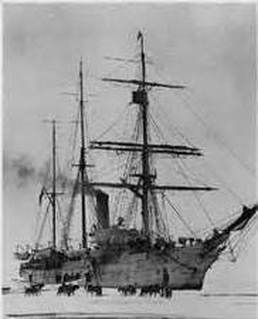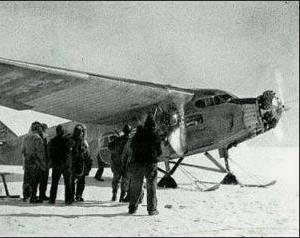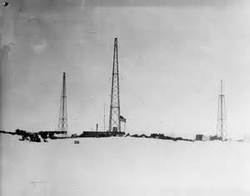The Byrd 1928 Antarctic Expedition
Expedition Overview/Timeline:
Richard E. Byrd, an acclaimed aviationist, set his sights to reach the South Pole by plane in what would be the most expensive, and largest expedition in Antarctic history. Embarking in 1928 from the New York harbor, Byrd took over 600 tons of supplies, almost 100 sled dogs, 3 planes, and much photography/surveying equipment to capture his geographic and expedition data/findings. From his basecamp nicknamed, “Little America”, set up in early 1929, Byrd's team undertook many photographic expeditions and geological surveys while planning for his flight to the South Pole. Following many important trips, and most notably the first successful flight over the South Pole on November 28, 1929 Byrd would return home to considerable fame, earning the promotion to “rear admiral”, and becoming a household name across the country.
Challenges:
Over the course of 2 years Byrd had achieved many of the goals he had set out to Antarctica to accomplish. The expedition was not easy however, with two specific events during its time showing that even some of the most accomplished expeditions encounter challenges.
Rockefeller Mountain crash: In March 1929, Byrd sent a small group to the Rockefeller Mountains for geological research. After setting up camp and securing their plane, a violent blizzard struck, ripping the aircraft from its moorings and sending it flying about a mile before crashing onto a frozen lake. The crash destroyed the radio, cutting off communication with Little America until a hazardous rescue a few days later.
South Pole flight troubles: As Byrd’s flight over the Ross Ice Shelf neared the towering Transantarctic Mountains, the plane struggled to reach the needed altitude to clear the peaks. Byrd had to quickly decide to dump 250 pounds of emergency food supplies, a risky decision, but allowing them to gain enough altitude. Once over the Polar Plateau, the flight became easier, though even flying at 11,000 feet, the thick ice below left them just 1,500 feet of ground clearance.
Byrd's Ford Trimotor: Floyd Bennett
Byrd's Ford Trimotor plane, nicknamed the Floyd Bennett, achieved the title of the first plane to ever fly over the South Pole. Byrd named the plane after his friend and fellow pilot who had perished after falling ill to pneumonia in a prior expedition. On the triumphant flight over the pole, the Floyd Bennett was loaded with extra fuel in five gallon containers, 750 pounds of emergency food, survival gear, and photographic equipment estimated to weigh about 15,000 pounds in total. Once they reached the pole, Byrd dropped an American flag weighed down with a rock from Floyd Bennett’s grave, and took several photographs highlighting the achievement. While not cutting edge, the plane was one of the first relatively lightweight, all metal airplanes, giving it the reliability and durability it needed to help Byrd accomplish such a historic flight.
Goals/Outcomes:
Revival of US arctic interests/enthusiasm: Byrd's 1929 South Pole flight reignited American interest in polar exploration, capturing the public’s imagination and gaining media attention. This sparked renewed enthusiasm for exploration and led the U.S. government to invest in future Antarctic research and the establishment of permanent research stations.
South Pole flight: Byrd achieved his goal of flying over the South Pole on November 29, 1929, in his small Ford Trimotor. This flight, though under challenging conditions and with limited technology, marked the first time anyone had flown directly over the South Pole. The successful flight was a major milestone in the history of polar exploration.
Geographical/photography work: Byrd’s team mapped uncharted areas, including the Ross Ice Shelf and Polar Plateau, and took thousands of photographs, filling gaps in Antarctica’s geographical knowledge. Their detailed documentation provided valuable data for future research and laid the foundation for later expeditions.
Conclusion/Legacy:
Byrd’s first Antarctic expedition was an incredible feat in the realm of polar expeditions, and would inspire research, exploration, and thought for years to come. To learn more about his legacy navigate to the “Legacies of the Expedition” subpage.
Sources
“1st Byrd Antarctic Expedition 1928-29.” ADMIRAL RICHARD E. BYRD, www.admiralbyrd.com/1st-byrd-antarctic-expedition-1928-29.html.
Wikipedia Contributors. “Richard E. Byrd.” Wikipedia, Wikimedia Foundation, 18 May 2019, en.wikipedia.org/wiki/Richard_E._Byrd.
Shephard, Rachel. “Admiral Richard E. Byrd.” Antarctic Logistics & Expeditions, 28 Aug. 2010, antarctic-logistics.com/2010/08/28/admiral-richard-e-byrd/.
“DSpace.” Osu.edu, 2024, kb.osu.edu/collections/3bac7625-e3a8-5f33-8305-6f937221a168. Accessed 19 Nov. 2024.
Keul, Renee. “8. Byrd and the Competition for Antarctica.” Osher Map Library, 23 July 2019, oshermaps.org/exhibitions/to-the-ends-of-the-earth/section-8.



